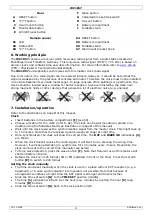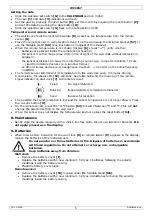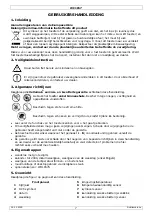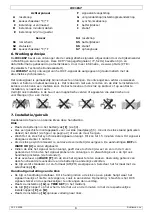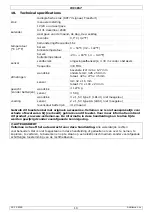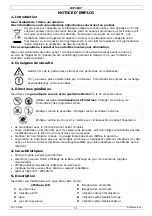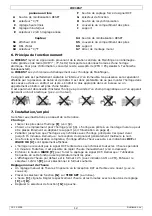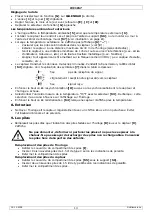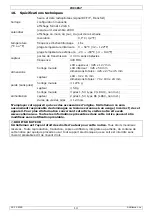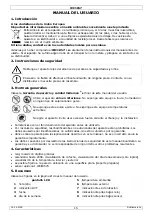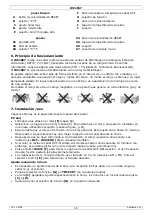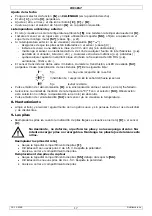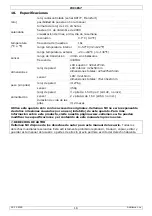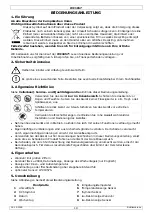
WC1857
03.12.2009
©
Velleman nv
4
Rear
F
Wave button
A
RESET button
G
Calendar/time set/lock switch
B
°C/°F button
H
Re-sync button
C
Hour/month button
I
Battery compartment
D
Minute/date button
J
Foldable stand
E
12h/24h/year button
Remote sensor
S4
RESET button
S1
LCD
S5
Battery compartment
S2
Status LED
S6
Foldable stand
S3
°C/°F button
S7
Wall mount bracket hook.
6.
Working principle
The
WC1857
contains a receiver which receives a radio-signal from a radio station located at
Mainflingen near Frankfurt, Germany. This long-wave radio-signal (DCF77, 77.5 kHz) is based on
atomic clocks and contains time and date information. For more information refer to
www.ptb.de
(PTB = Physikalisch- Technische Bundesanstalt).
The
WC1857
automatically synchronizes with this master clock radio-signal.
Due to its nature, the radio-signal can be received indoors. However, it should be noted that the
signal is weakened by the presence of concrete and metal. Therefore the clock must not be installed
in concrete basements or inside metal cages. In large concrete office buildings or apartments, the
clock should be located near a window for better reception. Also avoid installing the clock near
strong magnetic fields or other devices that generate a lot of electrical noise (e.g. engines).
7.
Installation/operation
Refer to the illustrations on page
2
of this manual.
Clock
•
Insert batteries in the battery compartment
[I]
(see §9).
•
Choose a location for the clock (refer to §6). The clock can be wall mounted or placed on a
desktop using the foldable stand (see illustration on page
2
of this manual).
•
Wait until the clock receives the synchronization signal from the master clock. This might take up
to 15 minutes. Note that the received signal is usually stronger at night time.
•
Once synchronized, the clock will show the correct time. The
DCF
and
WAVE OK
indications
[2]
are shown.
•
When the clock doesn’t receive the radio-signal, it will start to run showing the wrong time.
However, it will keep attempting to synchronize for 10 minutes every 3 hours. Meanwhile, the
clock can be set to the correct time manually (see below).
•
To force wave detection, press the wave button
[F]
. Note that frequent use of this feature will
shorten battery life time.
•
Default the clock is in 12h format (AM or PM indicated in front of the time). Press the 12/24h
button
[E]
to switch to 24h format.
Setting the clock manually
•
The time can be set manually when the clock is used in a place without DCF reception (e.g. a
basement) or in case synchronization is temporarily not possible. Note that because of
atmospheric conditions at night time the DCF signal is stronger and travels further.
•
Slide the time set switch
[G]
to the
TIME SET
position (middle).
•
The time
[1]
indication will flash. Set the hour resp. minutes by pushing the hour
[C]
resp.
minutes
[D]
buttons.
•
Slide the time set switch
[G]
back to the lock position (left).




